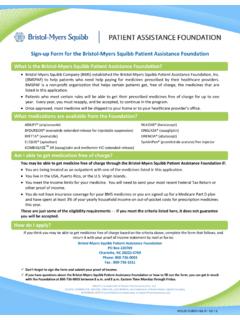Transcription of VETERINARY MEDICINE LICENSING GUIDE - …
1 Updated 3/8/2016 Page 1 of 13 VETERINARY MEDICINE LICENSING GUIDE 1. How the Profession Is Organized in Michigan 2. Eligibility for LICENSING 3. Tests 4. Time and Costs 5. Other Careers and Credentials 6. Beyond LICENSING 7. Important Links 1. HOW THE PROFESSION IS ORGANIZED IN MICHIGAN OVERVIEW This GUIDE looks at what you must do as a foreign-educated veterinarian to become eligible for licensure in Michigan. At the same time, it includes some background and tips on the larger VETERINARY MEDICINE profession to give you an idea of the variety of opportunities available as you work to build your career.
2 REGULATIONS OF VETERINARIAN PROFESSION IN MICHIGAN The practice of VETERINARY MEDICINE in Michigan is regulated by the Department of LICENSING and Regulatory Affairs (LARA) on behalf of the Michigan Board of VETERINARY MEDICINE . You must be licensed to practice as a veterinarian in Michigan. The GUIDE assumes that you hold the equivalent of a doctoral degree in VETERINARY MEDICINE that has been obtained from a school that is not accredited by the American VETERINARY Medical Association (AVMA) and that the Michigan license will be your first veterinarian license. The AVMA does accredit a number of foreign VETERINARY educational programs so you should check the list of accredited programs that is available on their website at As a foreign-educated veterinarian, you are required to become certified by either the Educational Commission for Foreign VETERINARY Graduates (ECFVG) or the Program for the Assessment of VETERINARY Education Equivalence (PAVE).
3 Both ECFVG and PAVE also verify that you have passed the required English Proficiency examination. You will become a Veterinarian in Michigan by applying for licensure by examination. The National Board of VETERINARY Medical Examiners (NBVME) administers the North American VETERINARY LICENSING Examination (NAVLE), which is required to become licensed as a veterinarian in Michigan. Internationally educated veterinarians need to meet several requirements to receive licensure by examination as a veterinarian in Michigan. The first step is to seek certification from either ECFVG or PAVE.
4 The steps for each certification program are outlined in this section. Updated 3/8/2016 Page 2 of 13 2. ELIGIBILITY FOR LICENSING I. ECFVG CERTIFICATION The ECFVG certificate is accepted by all state VETERINARY regulatory boards. This is an educational equivalency assessment certificate program that determines whether a foreign VETERINARY graduate has the VETERINARY clinical skills and knowledge that are equivalent to those attained by an entry-level graduate of an AVMA-accredited VETERINARY school. The ECFVG Certificate is not a license to practice VETERINARY MEDICINE . You do not need to be a citizen or permanent resident of the United States or Canada to register in the ECFVG program.
5 One is eligible to register for the ECFVG program while on a non-immigrant work visa, student visa, or exchange visa. The AVMA provides detailed instruction on the four steps of the ECFVG program at The steps below must be completed in order. Step 1: Registration and Proof of Graduation Register for the ECFVG certification program by applying online at Submit all required proof of graduation documents Submit the fee of $1, (increase took effect January 1, 2015) Step 2: English Language Ability Provide ECFVG with proof of English language proficiency using the pass points established by ECFVG for one of the following assessment tools.
6 Internet-based TOEFL IELTS CAEL Assessment TOEFL and IELTS scores are valid only for two years after the date of the tests Candidates completing secondary school in the , United Kingdom, Australia, New Zealand or Canada (except Quebec) can apply for a waiver for Step 2. Step 3: Basic and Clinical Sciences Knowledge All candidates must pass the ECFVG-specific Basic and Clinical Sciences Examination (BCSE) that is designed to measure the educational equivalency of graduates of non-AVMA accredited schools. The fee to apply for the BCSE is $210 (Fee increases to effect on January 1, 2015).
7 There are additional scheduling fees if the exam is taken outside of the , territories, or Canada. Information about the content and structure of the BCSE as well as scheduling information can be found in the Candidate Bulletin found at this website: Updated 3/8/2016 Page 3 of 13 There is no limit to the number of times a candidate can take the BCSE, but the BCSE can be taken no more than three times in a calendar year. Step 4: Clinical Skills Assessment All candidates must successfully complete the Clinical Proficiency Examination (CPE) to achieve certification.
8 This seven-section, clinical skills examination is designed to assess the practical clinical VETERINARY skills for an entry-level veterinarian. The CPE manual of administration (MOA) details most skills tested during the examination and should be thoroughly reviewed prior to taking the examination. This manual is updated each calendar year so it is vital to review the current MOA. The CPE is administered at approved colleges of VETERINARY MEDICINE or other authorized testing institutions. The 2016 fee will be $6,600 (USD). Candidates are required to submit a Surgical Experience Documentation signed by one or more licensed veterinarians in any international jurisdiction prior to being made eligible for the CPE.
9 Detailed information about the CPE can be found at this website: Requests to have verification of ECFVG Certification sent to a LICENSING board must be made in writing to ECFVG. Written requests can be sent via e-mail to II. PAVE CERTIFICATION PAVE Certification is a program that is designed to accurately and appropriately determine educational equivalence of international VETERINARY graduates seeking licensure in the United States. PAVE Certification is currently accepted by 43 states. The PAVE certificate is not a license to practice VETERINARY MEDICINE . The PAVE Certification program is operated by the American Association of VETERINARY State Boards (AAVSB).
10 AAVSB provides detailed instruction on the four steps of the PAVE program at Candidates can begin the PAVE application process once they have completed at least 50% of their VETERINARY education. The below steps must be completed in order. Step 1: Credentials Verification Submit an online application during the application window that is posted on the AAVSB website, Submit the application fee of $375 and the Qualifying Science Examination fee of $1,500. The total of $1,875 must be paid in full at the time of the initial application. Submit required credentialing information that includes identity documents, affidavit for release of information, citizenship papers, and educational documents.














